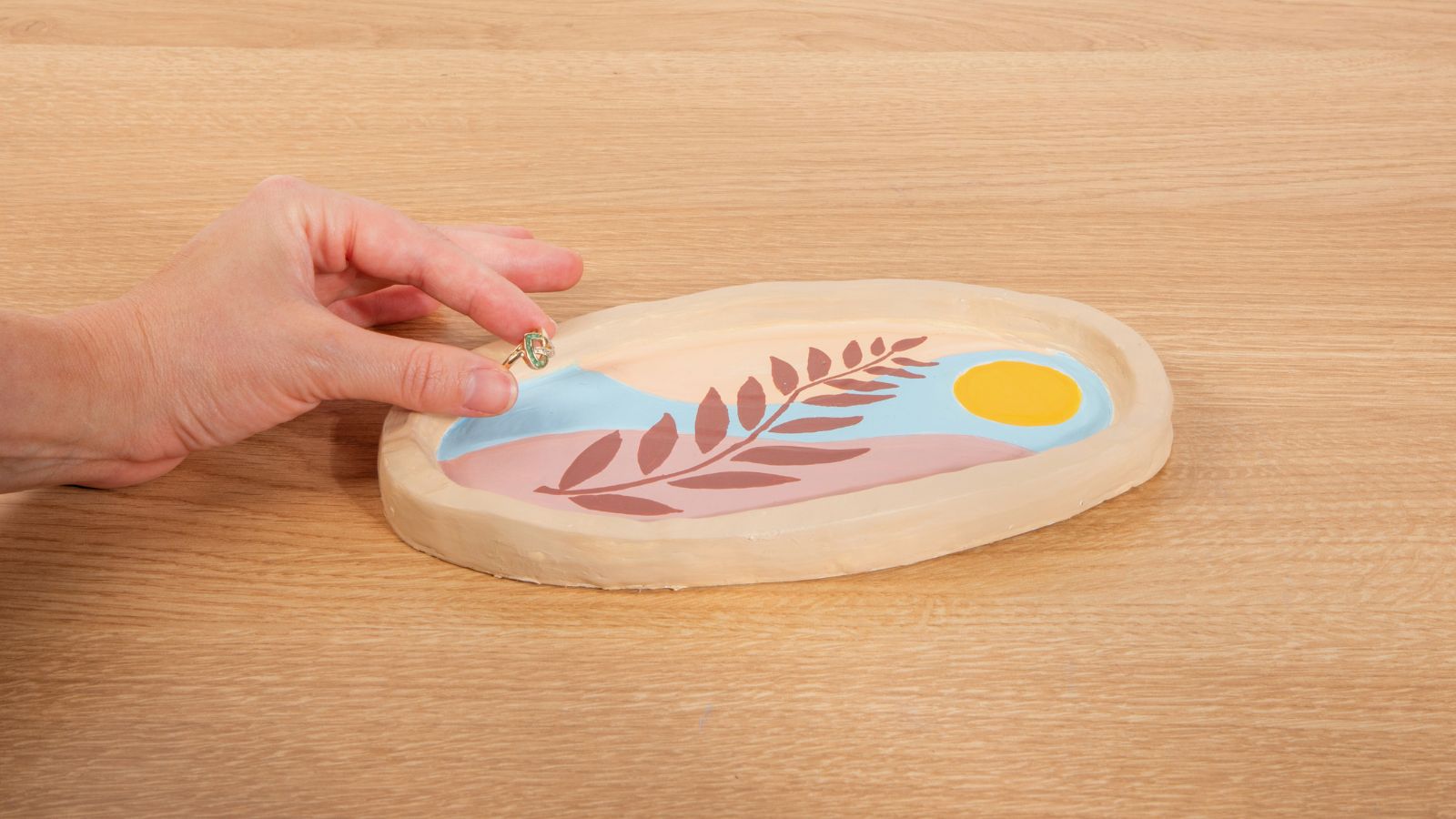Create Xin's butterfly drawing with oil pastel
1. Prepare your space
- Tape two pieces of Oil Pastel Paper to your working surface
- One will be your artwork and one will be where you create your pastel colour palette
- Grab our Extra Soft Oil Pastels, a black pencil, a wide palette knife, and a narrow palette knife
2. Palette knife use
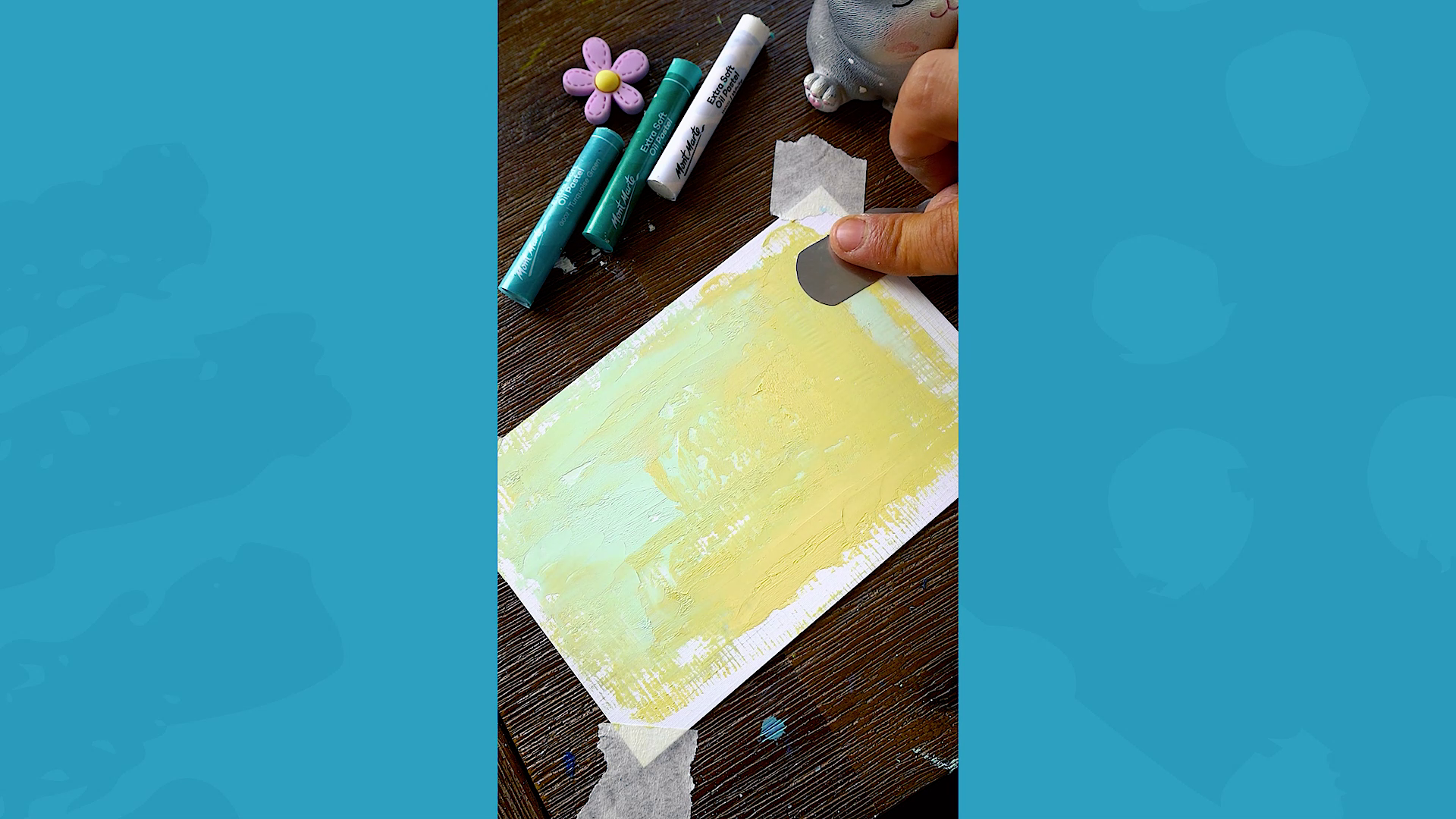
- We’ll be using palette knives to create 3D texture and apply the oil pastels thickly
- Using your wide palette knife, start by laying down Mint across the middle and left side of your paper
- Spread the colour out until it partially covers the area, allowing some negative space to show through
- Grab Naples Yellow and spread it across the centre and right section of your paper
- Use the wide palette knife to work the colours together where they meet, creating rough gradient blending
3. Oil pastel palette
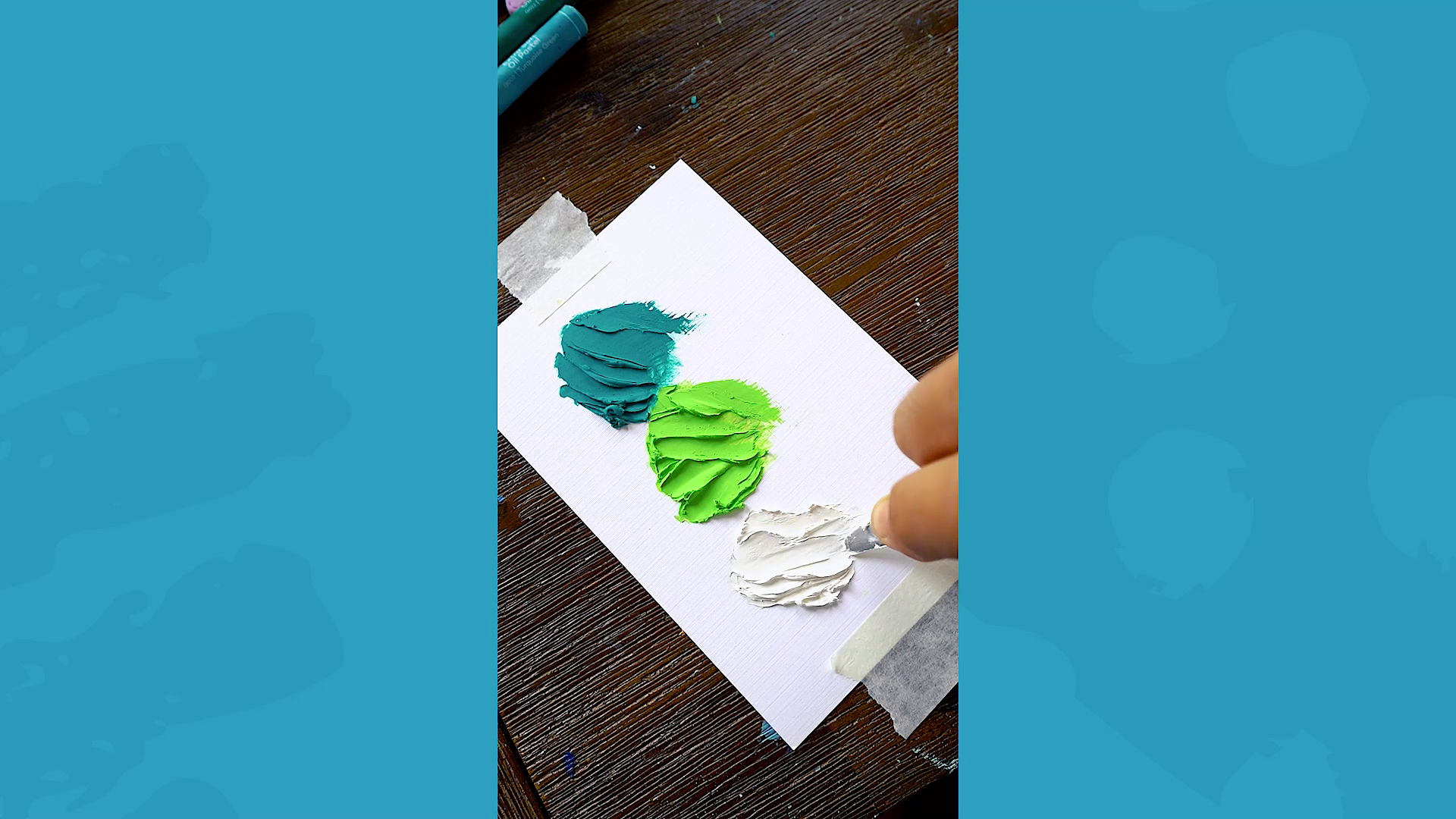
- Now it’s time to make your colour palette
- Pick out Viridian, Chartreuse, and White
- Use a narrow palette knife to slice off some of each colour, placing them apart on your palette paper
- Prime each one by smoothing it out and kneading it with your palette knife, making sure to clean the knife between colours
- Once your colours are ultra soft and easy to manipulate, they’re ready to go!
4. Drawing butterfly outline
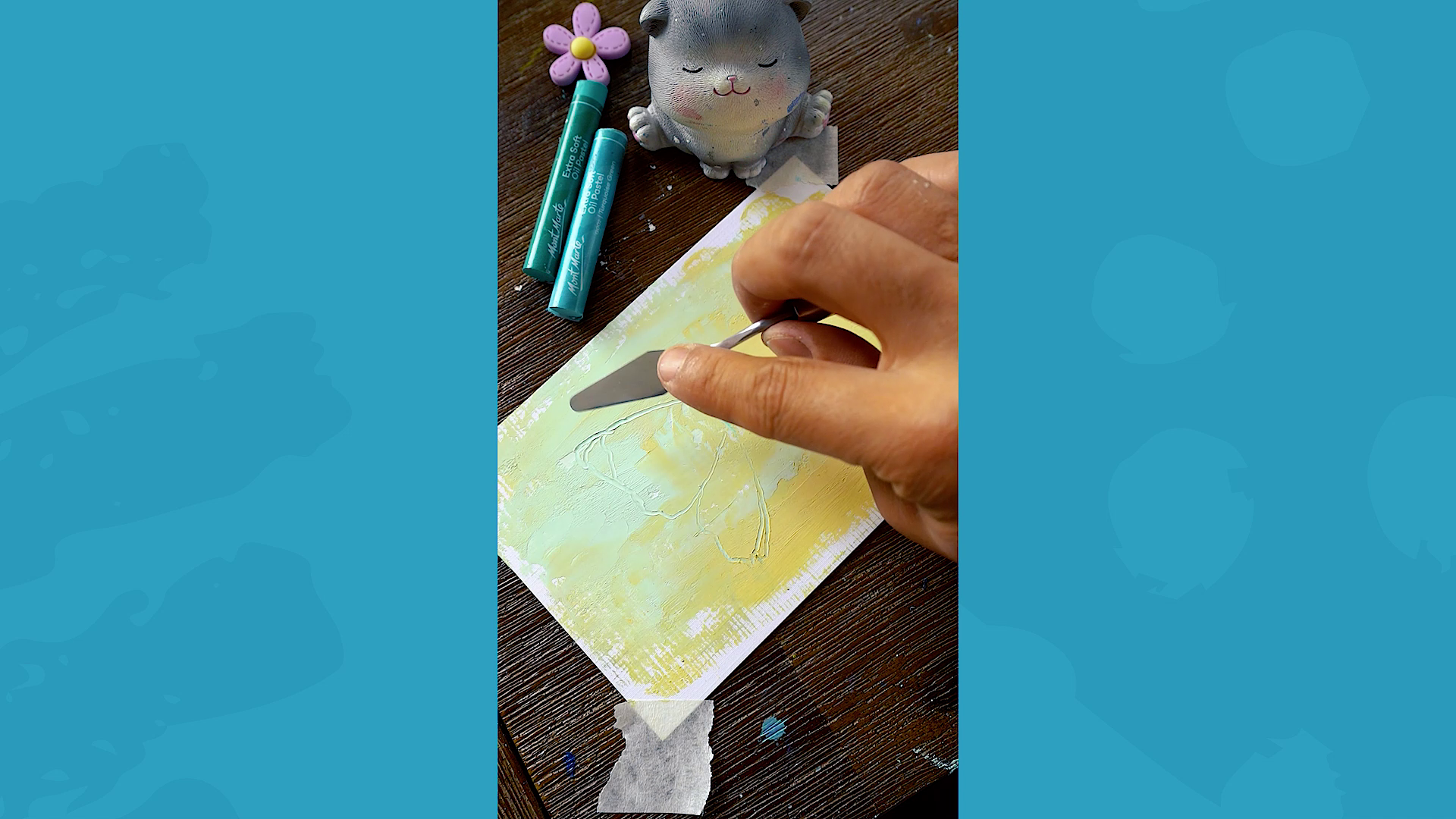
- Use a clean, pointed palette knife to lightly carve the outline of half a butterfly into your mint and yellow background
- With the body of the butterfly in the centre of the page, sketch the wing outline extending to the left
- This is just to guide your colour placement and does not need to be perfect
5. Colouring the butterfly wing
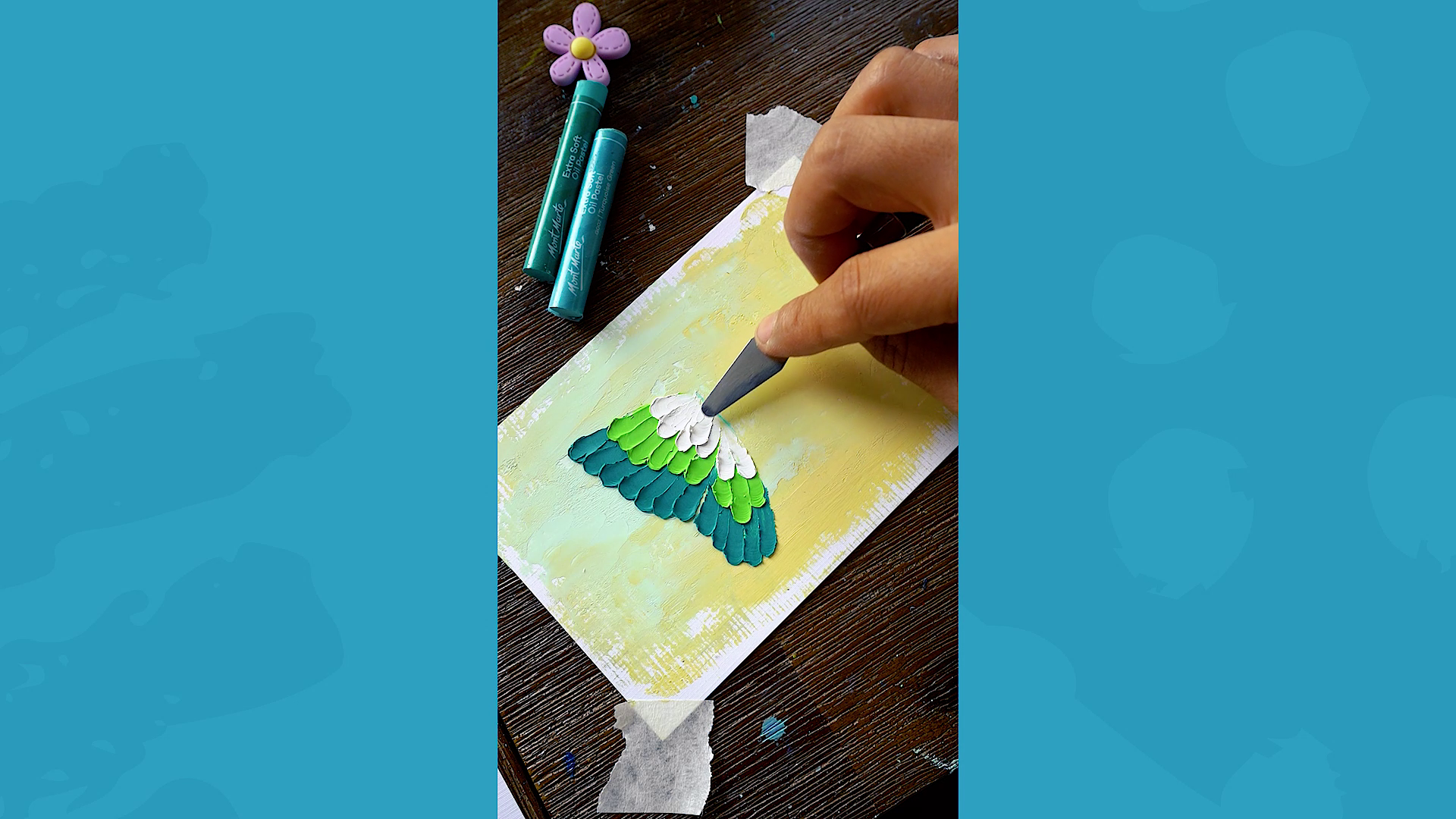
- Using oil pastels from your palette, start with Viridian
- Use your narrow palette knife to apply small strokes of colour to the butterfly wing, starting from the outer edge and ending halfway towards the body
- Keep working down the outer edge of the butterfly wing until it is bordered with strokes of Viridian
- Finesse this layer so the strokes look even and fill the wing’s edge
- Repeat the process with Chartreuse, starting from near the end of each Viridian stroke and stopping a few centimeters from the butterfly’s body
- Finesse the shape and size of the strokes until you’re happy with them
- Finish with White, starting from the end of the Chartreuse strokes and ending where the body of the butterfly begins
- Finesse the size and shape of the strokes to finish the wing colouring off!
6. Painting the body
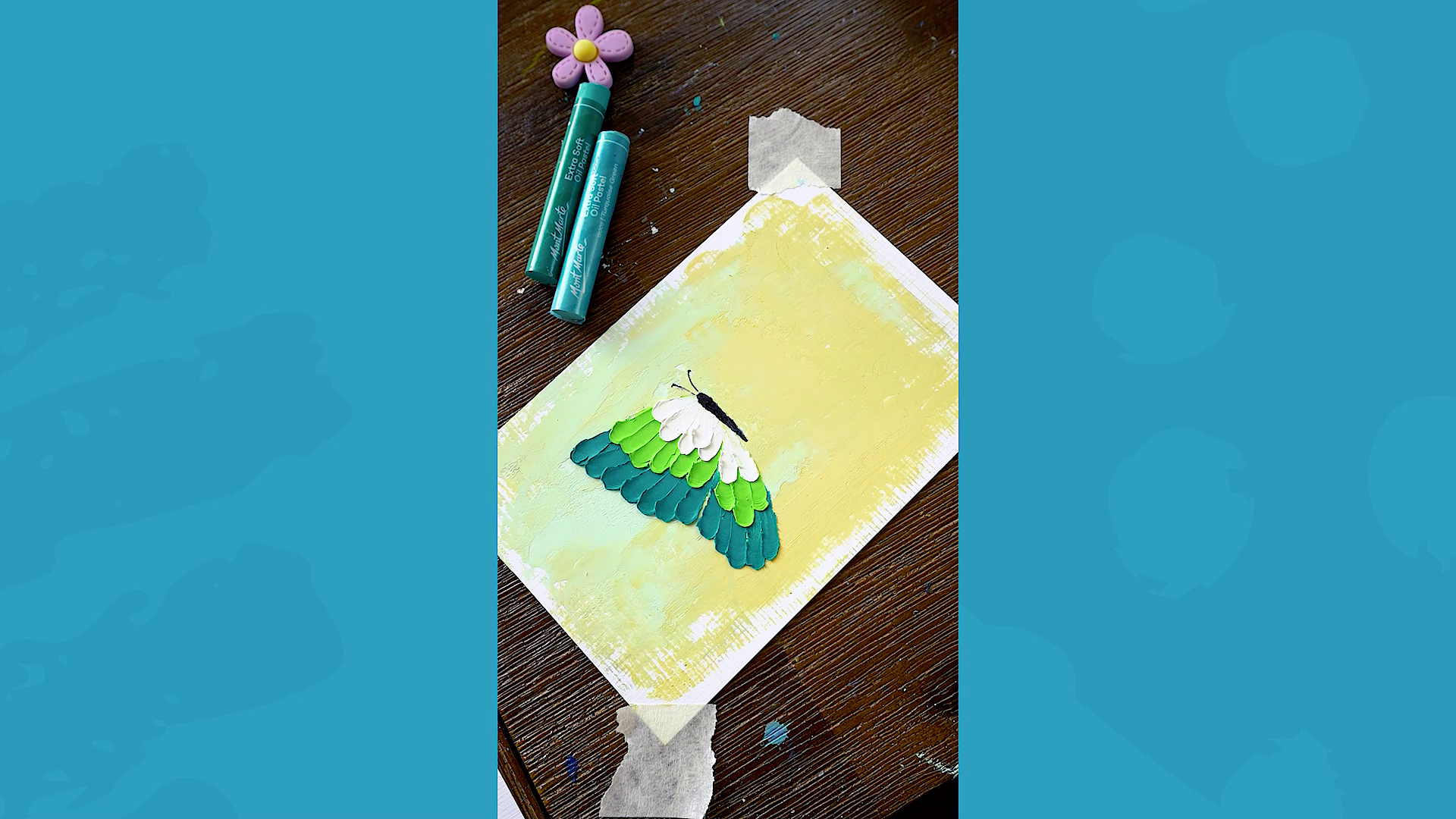
- Use your narrow palette knife and apply some Black oil pastel to the tip
- Make sure it’s a very small amount so you can be precise
- Carefully start drawing in the butterfly’s body, applying thinner lines and gradually thickening the weight
- The body should be thicker towards the top and tapered at the bottom
- End the body where the lowest White stroke starts
- Finish off the body by adding antenna with a black pencil
- Carefully apply a small amount of black oil pastel with the point of your palette knife for the tip of the antenna
7. Drawing flowers with oil pastels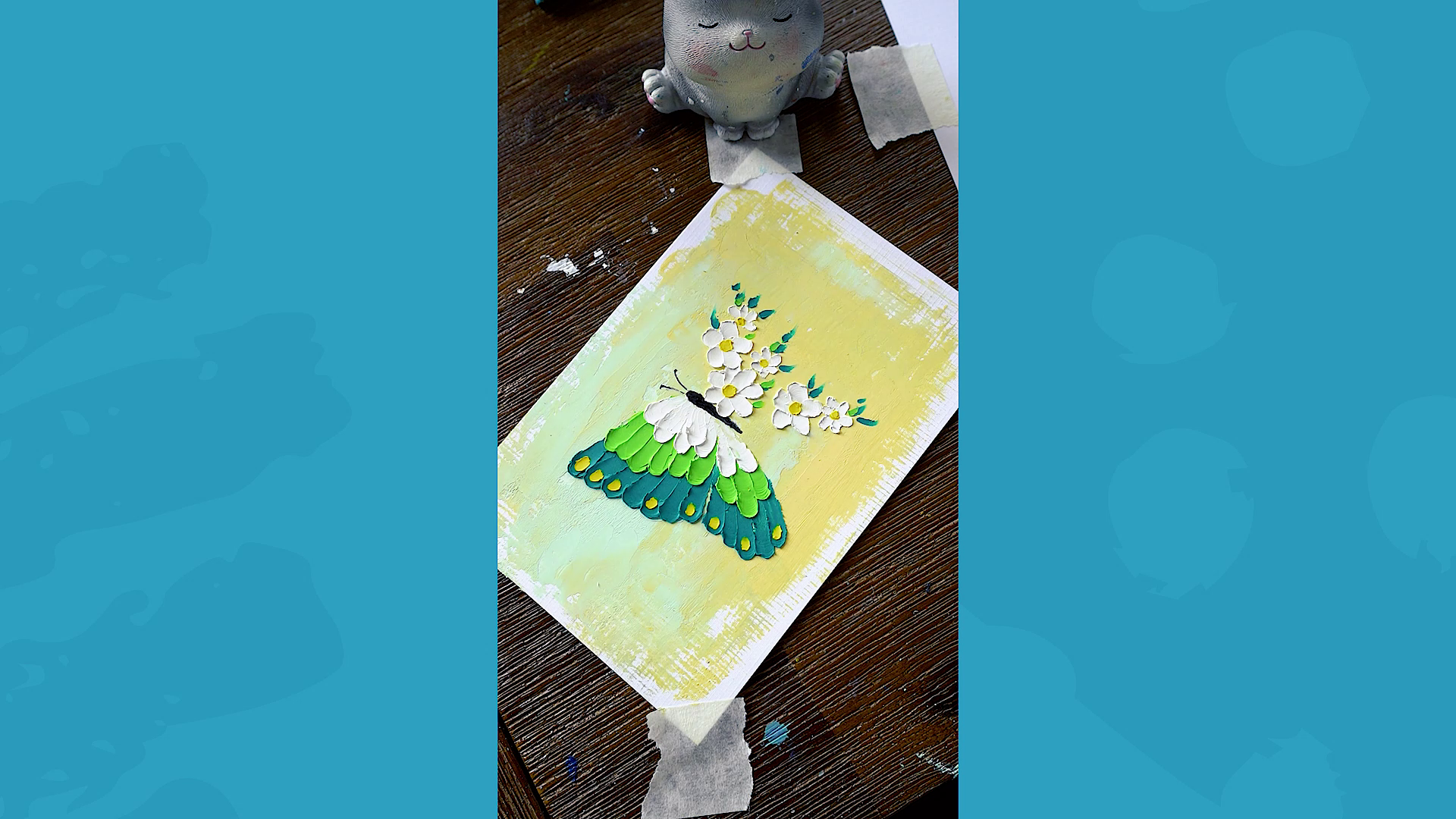
- Lay down strokes of White oil pastel to the right of the body in a circular shape - this will create a flower!
- Overlap the edge of the butterfly’s body for extra dimension and to connect the flowers to the insect
- With the biggest flower near the body, add in additional flowers around the first one, roughly in the shape of a wing
- Prepare some Yellow oil pastel on your palette and use it to add centres to the flowers
- Apply Yellow in the middle of each flower with the tip of your narrow palette knife, creating a circular shape
- Once every flower has a dot in the middle, it’s time to add the same small dots to the edge of the left wing, over the Viridian strokes
- Next, use your Viridian and Chartreuse shades to add leaves to the edges of your flowers
- Taper your strokes so they create a leaf shape
- Finesse the details until you’re happy with them!





























